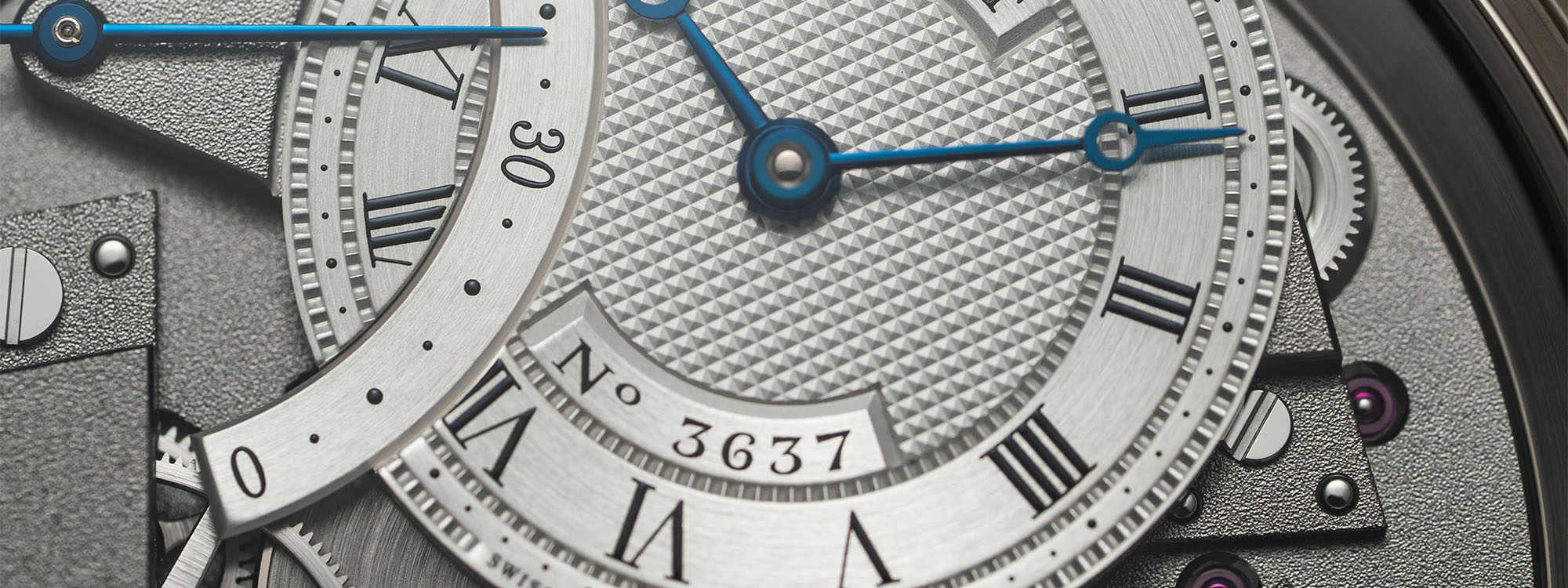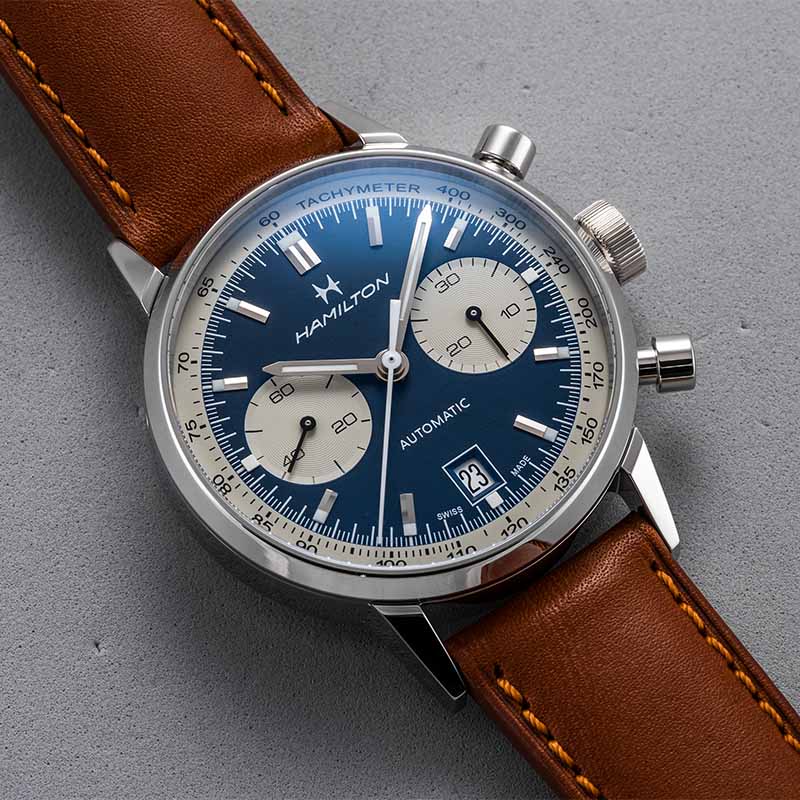Watches with Roman numerals on the dial are among the most stylish and classically elegant of timepieces, despite the fact that most of them have what we might today refer to as an egregious typo. Then again, it’s not really a typo if it’s intentional, right? And the use of a "IIII" in place of the standard Roman numeral "IV" is clearly a conscious decision, as it's been commonplace for centuries. In this article, we offer some possibilities as to why.

As anyone familiar with the Roman alphabet knows — and nowadays that probably includes anyone who pays attention to Super Bowl advertising — the Arabic numerals 1, 2, and 3 are rendered, respectively, as I, II, and III, but the format changes with the numeral 4, which is rendered as “IV,” and 5, which is simply “V.” Without getting too bogged down in an ancient alphabetization lesson, the first three numerals after zero (and after 5) are additive, while the one before the next major character, representing 5, is subtractive: “IV” stands for 4 because it’s five (V) minus one (I). And yet, take a glance at just about any watch dial, or clock dial, for that matter, that uses Roman numerals to denote its hours and most often you will find not a “IV” but a “IIII” — the so-called “clockmaker’s 4,” which differs from the Roman numeral we’re familiar with today.
 Making watches, as any aficionado knows, is one of the most meticulous, time-intensive, and detail-oriented pursuits in the world; there’s a reason that cultures like the Swiss, Germans, and Japanese excel at it. How could such a blatantly incorrect detail have ever appeared on a watch face, much less been widely adopted over hundreds of years of watchmaking?
Making watches, as any aficionado knows, is one of the most meticulous, time-intensive, and detail-oriented pursuits in the world; there’s a reason that cultures like the Swiss, Germans, and Japanese excel at it. How could such a blatantly incorrect detail have ever appeared on a watch face, much less been widely adopted over hundreds of years of watchmaking?

There are numerous theories, all of them rooted in conscious decisions rather than mistakes. One goes all the way back to the Roman Empire, which of course did not have mechanical clocks (and certainly not wristwatches), but did use sundials, clocks’ more primitive ancestors. In point of fact, the numeral 4 in the Roman alphabet was often represented as “IIII” rather than “IV” in ancient times — just as 9 was written as “VIIII” rather than “IX.” (The use of “IV” became more prominent, apparently, after the fall of the Roman Empire.) Part of the reason for this may have been a conflict with the Latin alphabet and a fear of divine retribution from the mythological god Jupiter, supreme deity in the Roman pantheon, whose name in Latin was spelled “IVPPITER” and whom Roman citizens would have feared offending by abbreviating his name (“IV”) on a timekeeper’s dial.

Another theory springs from the 14th Century and the reign of King Charles V of France. Charles apparently considered the “IV” to be bad luck, as it represented a year subtracted from his title (and thus his life?) and ordered his watchmakers to use “IIII” instead. Some point to a later French King, Louis XIV (above), aka “The Sun King,” who famously proclaimed “L’état, c’est moi,” or “I am the state,” as the progenitor of the alternate Roman numeral. The monarch who saw himself as God’s representative on Earth, and instituted the Divine Right of Kings that eventually led to the French Revolution, the famously arrogant Louis XIV might have been just as offended as Jupiter to see part of his name on a lowly watch dial. The practice preceded his reign, however, so it’s unlikely that he ever issued any kind of edict on the matter.

Could the limited literacy of ancient peoples be part of the explanation? One theory posits that using the “IIII” on the dial of the clock in the town square was simply easier for an average, uneducated European citizen in the Middle Ages — who likely could not read, write, or do mathematical calculations beyond the most basic — to comprehend. Counting to four would have been easier than subtracting one from five, so goes the belief, and “IV” would have been too easy to confuse with the nearby “VI” at 6 o’clock.

A hypothesis that many consider rather implausible, but might ring true for anyone who’s ever had to cut corners in business, is the so-called “lazy watchmaker” theory. It revolves around the metal molds that were used to create the applied indexes on those early watch and clock faces. Using “IIII” for 4 and “VIIII” for 9 — i.e., all additive numerals until you get to 10 — would require the use of only three molds. The first “IIII” mold for casting numerals 1 through 4; the second “VIIII” mold to cast 5 through 9; and a third “XII” mold to cast 10 through 12. Adding “IV” and “IX” would have required additional molds and thus would have made for a more inefficient process. It’s unclear if economic conditions ever really got this tough for horologists in the old days.
 The explanation most watch designers would stick with today to justify using IIII roman numerals involves simple aesthetic considerations. Using the thicker “IIII” numeral rather than the more slender “IV” at 4 o’clock makes for a better visual symmetry with the heavy “VIII” for 8 o’clock that balances it out on the bottom half of the dial. Also, eschewing “IV” for “IIII” — thus creating the sequence I, II, III, IIII, V, VI, VII, VIII, IX, X, XI, XII — helps divide the dial harmoniously into thirds: four “I” numerals followed by four “V” numerals followed by four “X” numerals for an elegant progression.
The explanation most watch designers would stick with today to justify using IIII roman numerals involves simple aesthetic considerations. Using the thicker “IIII” numeral rather than the more slender “IV” at 4 o’clock makes for a better visual symmetry with the heavy “VIII” for 8 o’clock that balances it out on the bottom half of the dial. Also, eschewing “IV” for “IIII” — thus creating the sequence I, II, III, IIII, V, VI, VII, VIII, IX, X, XI, XII — helps divide the dial harmoniously into thirds: four “I” numerals followed by four “V” numerals followed by four “X” numerals for an elegant progression.
 Of course, just like there are exceptions to the rule in historical clockmaking — London’s Big Ben (above), the oldest clock in the world, uses the proper “IV” at its 4 o’clock position — there are exceptions to the rule in today’s watch world. H. Moser & Cie., for example, has been known to use “IV” at 4 o’clock rather than IIII Roman Numerals — albeit oriented in a different direction from the rest of the radially placed numerals so it's easier to read. And some watchmakers avoid the issue altogether on their Roman numeral dials by swapping out an index for the 4 o’clock integer (as below). However the practice started — whether out of respect for gods, kings, or the illiterate masses, or for some other reason entirely — nowadays, it’s most certainly aimed at the well-honed design sensibilities of the modern watch consumer and collector. Hopefully Jupiter would approve.
Of course, just like there are exceptions to the rule in historical clockmaking — London’s Big Ben (above), the oldest clock in the world, uses the proper “IV” at its 4 o’clock position — there are exceptions to the rule in today’s watch world. H. Moser & Cie., for example, has been known to use “IV” at 4 o’clock rather than IIII Roman Numerals — albeit oriented in a different direction from the rest of the radially placed numerals so it's easier to read. And some watchmakers avoid the issue altogether on their Roman numeral dials by swapping out an index for the 4 o’clock integer (as below). However the practice started — whether out of respect for gods, kings, or the illiterate masses, or for some other reason entirely — nowadays, it’s most certainly aimed at the well-honed design sensibilities of the modern watch consumer and collector. Hopefully Jupiter would approve.

























































1 Comment